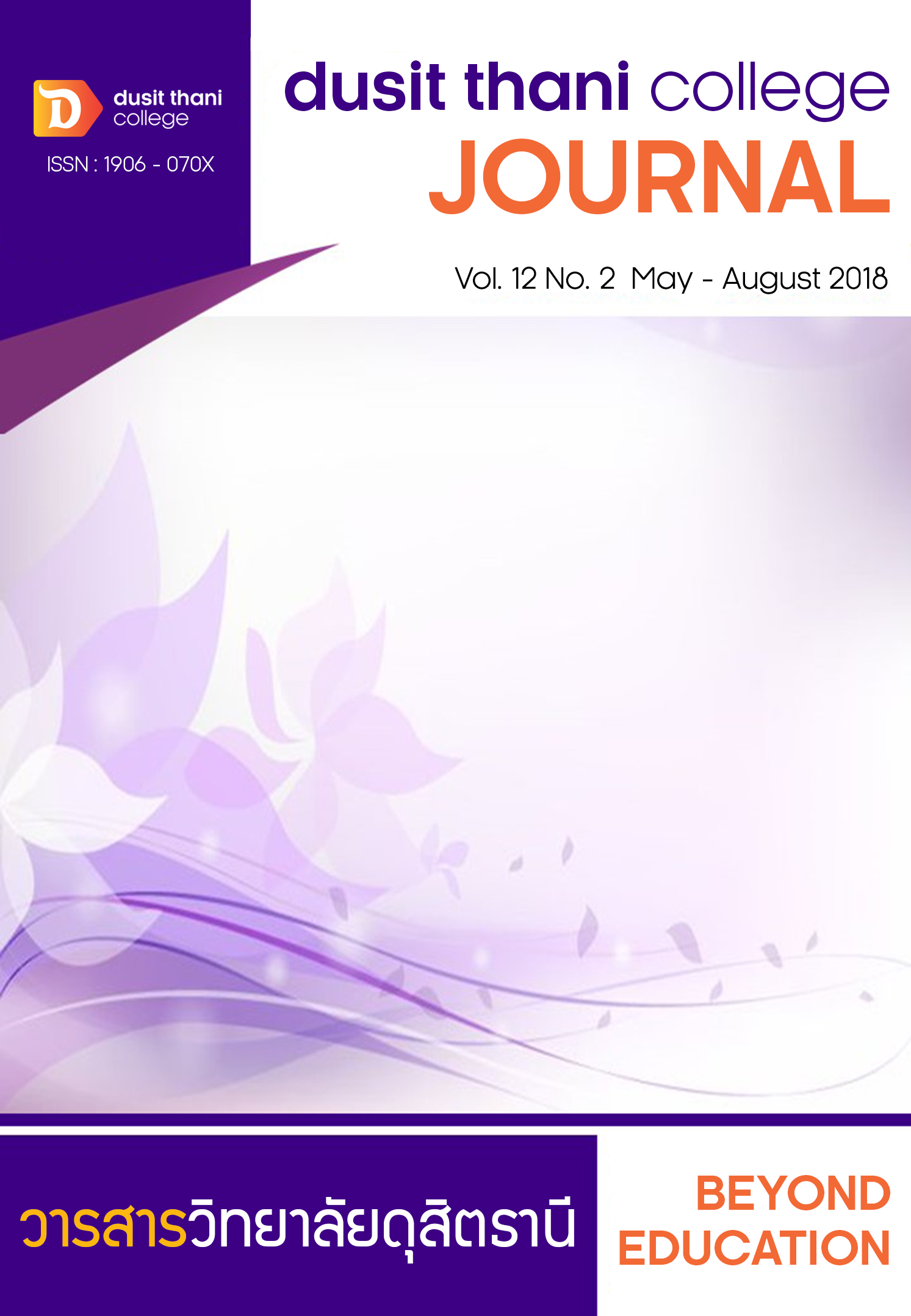Development of Training Program Using Constructionism Theory to Develop Critical, Creative, Productive, and Responsible Mind (CCPR) of Higher Education Students in Communication Arts in Private Higher Education Institutions
Main Article Content
Abstract
This qualitative and quantitative research dealt with the development of a training program based on constructionism to empower students majoring in Communication Arts in private universities to acquire the following characteristics: critical thinking, creative thinking, productivity and responsibility (CCPR). In doing so, it explored the students’ awareness of these characteristics and the factors that affected the acquisition of CCPR. The main objectives of this study were to design a program based on constructionism to train the students on how to acquire these characteristics. Three hundred and eighty-three questionnaires were collected from students majoring in Communication Arts in private universities and in-depth interviews from administrators and instructors. The data were analyzed and used as guidelines for developing a training program based on constructionism to raise students’ awareness of the importance of CCPR and to teach them how to acquire these characteristics.
The findings revealed that the students ranked the importance of CCPR high but the number varied according to the size of university, in that there were more students in a large university ranking it high than those in medium-sized and small universities. The factors that affected the acquisition of CCPR were 1) university administrators, 2) instructors, 3) students, and 4) environment. Consequently, a 32-hour training program was designed based on constructionism. It was divided into 8 units, each of which covered the content related to the four characteristics. The learning involved hands-on workshops in the field of Communication Arts through such tools as computers, mobile phones and Facebook so the students could study using their own tools. At the end of the training, the students’ awareness of CCPR increased. The highest level was that for productivity.
The results of this study indicate the students’ awareness level of CCPR, the factors that affected the enhancement of CCPR among these students and the design of a training program that can be used as a part of a course to empower the students to realize such characteristics as critical thinking, creative thinking, productivity and responsibility.
Article Details
Article Screening Policy
- All research and academic articles to be published must be considered and screened by three peer reviews in the relevant field / article.
- All articles, texts, illustrations and tables published in the journal are the personal opinions of the authors. Editors don't always have to agree. And no responsibility whatsoever is the sole responsibility of the author.
- The articles to be published must never be published. Where did you first publish? And not in the consideration of other journals If the audit found that there has been a duplicate publication It is the sole responsibility of the author.
- Any article that the reader sees as being plagiarized or impersonated without reference. Or mislead the work of the author Please let the journal editor know it will be your greatest blessing.
References
Paitoon Sinrarat. (2549). Education for Creative and Productive. Bangkok: Chulalongkorn University.
Jobstreet.Com (2557). Prachachartthurakit Essay.28 April 2558, From https://profnet.igetweb.com/index.php?mo=3&art=41969313
Bloom, Benjamin A. (1956). Taxonomy of Education Objective Handbook I : Cognitive Domain. New York: David Mc Kay Company.
Bourne,Lyle E., Bruce R, Ekstrand and Roger L. Dominoski, (1971).The Psychology of Thinking. New Jersey : Prentice-Hall.
Bruner Lerome S. (1969). The Process of Education. Massachusette Haward University Process Cambridge.
Chickering, A.W., and Reisser, L. (1993). Education and Identity. San Francisco: Jossey-Bass Publishers.


